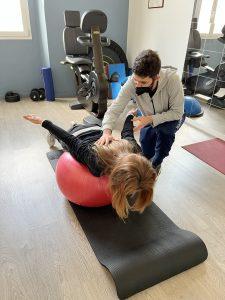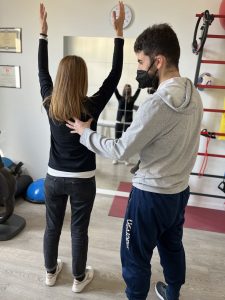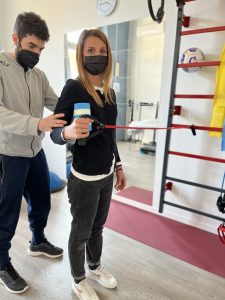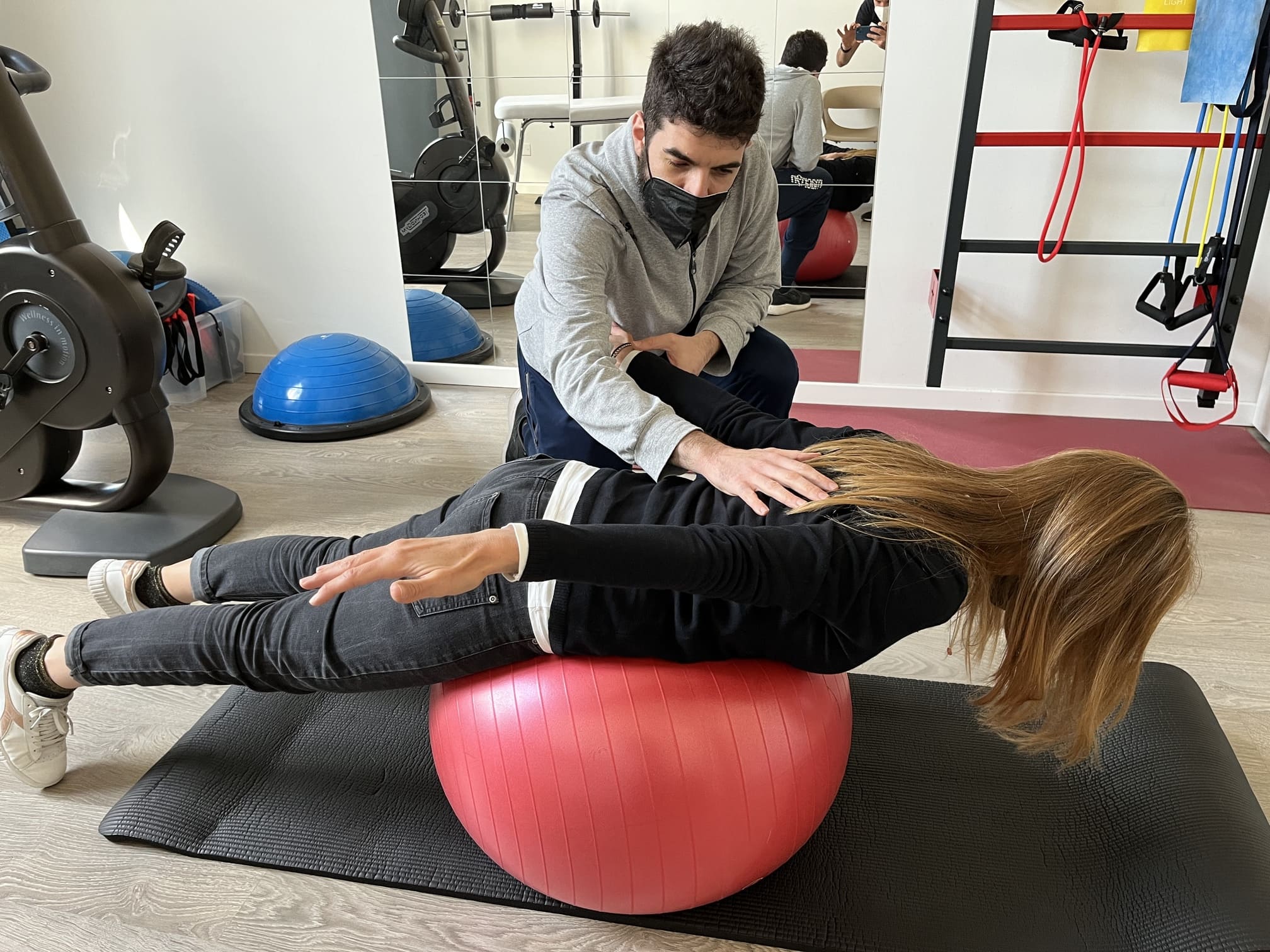By Simone Cecchini
We talk to our expert physiotherapist Claudio Brandi about this pathology which is very common in all sports that involve numerous over-head movements.
 The rotator cuff is a set of shoulder muscles – while the rotator cuff muscles are three: supraspinatus, infraspinatus, teres minor.
The rotator cuff is a set of shoulder muscles – while the rotator cuff muscles are three: supraspinatus, infraspinatus, teres minor.
These three muscles unite in a single tendon that inserts itself on the humerus. Their function is to extra-rotate and initiate abduction of the arm, they also stabilize the joint in over-head movements.
The tendon that is most troubled is that of the supraspinatus precisely because of its positioning; in fact, this tendon passes under a bone called the acromion and can therefore create a conflict that can damage the tendon over time.
But the main cause of tendinopathy is nevertheless functional overload: repeated movements, wrong exercises, too high loads, over time lead to a change in the structure of the tendon, which becomes unsuitable for bearing loads and movement.
We must always bear in mind that the movement of the shoulder is a very complex movement since there are nineteen muscles that work directly or indirectly on the joint; it is understood that an imbalance in this complex mechanism can cause pain.
 As already mentioned in the introduction, therefore, the sports where cuff tendinopathy is more frequent are: swimming, tennis, volleyball and in general all sports that involve numerous over-head movements.
As already mentioned in the introduction, therefore, the sports where cuff tendinopathy is more frequent are: swimming, tennis, volleyball and in general all sports that involve numerous over-head movements.
The symptoms of tendinopathy are characteristic: in the initial stages the pain is present only during the rotation and elevation movements of the arm, especially in certain degrees, it even tends to decrease with activity; it is therefore more present “cold”. In the later stages there is a worsening of the symptom, which becomes persistent and present, even at rest, and often also at night; in fact, many patients claim that they cannot sleep. If the pathology is neglected it can even lead to tendon injury.
You have to be very careful when evaluating, as shoulder pain can be caused by numerous other conditions and you can easily make the mistake of confusing the cause.
Regarding the treatment, it is first of all necessary to contact a physiotherapist specialized in the rehabilitation of the upper limb who, evaluating the case, decides whether to send the patient to a specialized orthopaedic on the shoulder – in the most complex cases – or whether to start the treatment, in the most complex cases in which the symptoms are not excessively severe.
 The rehabilitation process will develop through targeted exercises and active treatments, aiming at restoring the correct movement of the shoulder and modifying all those vices and errors that have led to the deterioration of the tendon. The work will focus on strengthening the cuff tendons, rebalancing the shoulder blade rhythm, training the core and strengthening the kinetic chain of the upper limb.
The rehabilitation process will develop through targeted exercises and active treatments, aiming at restoring the correct movement of the shoulder and modifying all those vices and errors that have led to the deterioration of the tendon. The work will focus on strengthening the cuff tendons, rebalancing the shoulder blade rhythm, training the core and strengthening the kinetic chain of the upper limb.
The timing depends on the extent of the disease and how long the patient has been affected by it. Usually it can go from a month to about three months.
.
Always remember to contact specialized personnel and that the Physiotherapist is graduated and registered
Info: Claudio Brandi is a registered Physiotherapist, specialized in the recovery of sports injuries, orthopaedic and post-operative rehabilitation. He receives at the medical offices of Olymed Sportlab, in via di Ripoli 88, adjacent to the Olympus gym / Tel. 348 052 3287
